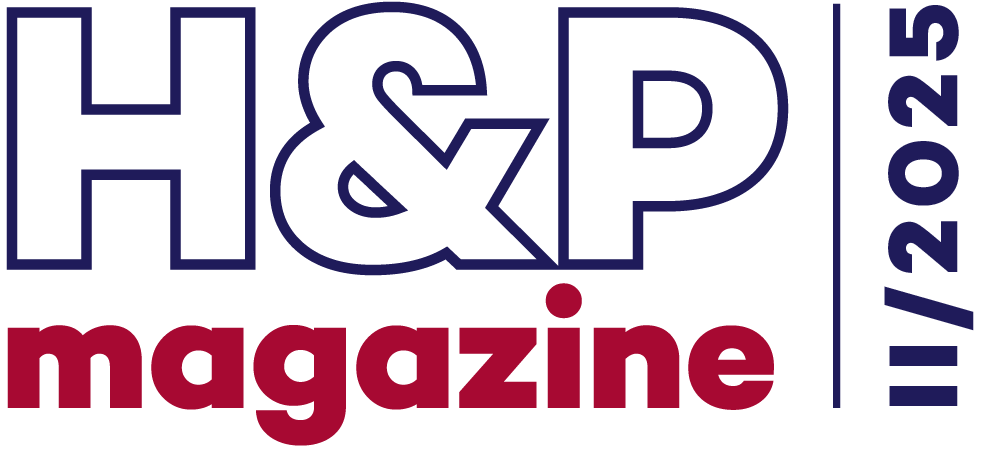The business landscape is undergoing significant transformation. The European Digital Identity Wallet is poised to revolutionise identity verification, contract signing, online sales, and customer communication across the EU. How can your business fully leverage its potential? And why and how should you prepare for it without delay?
While children will be looking out the window for Santa Claus, European companies will be anxiously awaiting whether their Member States will provide them with a European Digital Identity Wallet. Perhaps that is an exaggeration, but that's what the next Christmas in Europe could look like. Member States have until precisely 24 December 2026 to furnish at least one functioning wallet. Preparations for this date are gradually gathering pace in the Member States and businesses are already looking forward to the benefits of this digital innovation.
By the end of 2026, every European should be able to obtain a single digital identity recognised in all Member States.
The preparations have been ongoing in each Member State since the adoption of the final text of eIDAS 2.0 in May 2024. What’s the current situation in the Czech Republic? In choosing the appropriate model for development and operation, the Czech Republic took the concession route. This means that the wallet will be operated by a private provider commissioned by the state. The selected contractor should ideally have a contract in place by the end of this year. By next Christmas at the latest, we should be able to use the wallet in the Czech Republic.
Classic wallets in your pocket - a thing of the past?
What will it all look like in practice? The European Digital Identity Wallet is designed to function as a mobile application. You can upload virtually all your identifying information – such as your name, age, and address – as well as your university diploma or medical prescriptions. The wallet will also allow you to confirm family relationships, gun permits, powers of attorney, student status, gym memberships, airline tickets, sports event tickets, and more.
You will even be able to add information related to items or services – for example, a licence or a technical certificate. Put simply, it can be seen as the digital equivalent of a traditional wallet, with the key difference being that you have full control over it. You decide which documents and information you "carry" in it, and with whom you share them.
You only need to click to share the specific information required for a given purpose - for example, to confirm your age or citizenship – without revealing any additional personal details. The wallet can also be used offline for identification. You’ll be able to prove your identity using your phone instead of presenting physical documents during in-person meetings. This concept already exists today with the eDoklady app, which offers a digital version of your driving licence. However, compared to the expected capabilities of the European Digital Identity Wallet, eDoklady is very limited in function.
Use of the wallet will, of course, be voluntary, and existing ID cards and identification methods will remain valid. But if you choose to verify your identity digitally using the wallet, public authorities and selected private companies will be required to accept it as a legitimate method of identification.
Signature in a few clicks
The European Digital Identity Wallet will primarily be used by individuals for identification – whether as consumers, entrepreneurs, or representatives of a legal person. This presents a major challenge for both the B2C and B2B sectors. The wallet provides seamless access to digital services across the EU and enables the use of qualified electronic signatures – at least for non-professional use – free of charge. This is the highest level of electronic signature, recognized under the eIDAS Regulation as legally equivalent to a handwritten signature.
The wallet will therefore play a key role in many areas of everyday life, such as online shopping, signing contracts, and managing or sharing personal documents. With the ability to automate many processes, it can also significantly streamline business operations and reduce costs. The potential for integration is broad, and every sector will be able to find its own use case.
E-commerce and the financial sector are likely to benefit the most from the wallet. Banks, fintech companies, investment firms, and insurance providers – all of which currently face demanding client verification procedures – will see a significant transformation in how those processes are handled.
Beyond the limits
One of the biggest advantages of a European Digital Identity is the removal of barriers to cross-border interactions. The wallet will function both at home and abroad, specifically across the EU, setting it apart from national solutions like eDoklady. This makes it just as easy to verify a foreign business partner as it is a domestic one. It can simplify the paperwork involved in expanding a company into foreign markets and support cross-border online sales of goods and services.
The wallet will also be highly practical for individuals outside the Czech Republic. For example, if you move to Germany with your family, you’ll be able to use your wallet to handle all the initial administrative steps - registering with local authorities, enrolling your children in kindergarten, submitting your university diploma to your employer, signing a work contract, and more. All of this can be done from anywhere, with just a few clicks.
E-commerce businesses will be able to serve customers across the EU without unnecessary complexity. For instance, customers shopping online will be able to instantly share personal data - such as their full name, age, or delivery address – through their wallet, eliminating the need to fill out traditional forms. As a merchant, you'll know immediately who you're dealing with – and be confident that the information is accurate and up to date. In the future, you might even be able to make payments directly through the wallet. In short, we’ve never been closer to leaving our physical wallets behind.
Safe and without paperwork
Implementing the wallet in your company will also make it easier to meet statutory obligations related to data protection. By design, digital identities adhere to the principles of the GDPR. Customers share only the minimum necessary information – often with their explicit consent. This gives you greater legal certainty that the data you’re working with is accurate, relevant, and compliant when verifying customer identities. It also reduces the risk of penalties for improper data handling.
The wallet can also help prevent data leaks from company databases, since you won't need to store copies of documents or unnecessary personal data. Combined with the wallet’s robust security features – such as multi-factor authentication and asymmetric cryptography – it also strengthens your overall cybersecurity. That’s especially important given that the recently adopted new Cybersecurity Act will tighten compliance requirements for businesses.
Overall, the wallet promises a major simplification of administrative tasks. There will be no need to copy documents, fill out forms with customer data, or archive physical contracts – all of this can be fully digitised and automated. Even repetitive tasks like checking document validity or updating client information can be handled automatically, saving both time and resources.
The wallet will also be a valuable tool in HR processes. Employees will be able to share all necessary information with a new employer remotely, securely, and in just a few clicks – including items that previously required a trip to the office or a physical copy, such as a university diploma or a certificate of good conduct. This simplifies onboarding for new hires and streamlines updates to records for current staff.
The validity of data in the wallet will be confirmed by trusted electronic attribute providers. Qualified public providers will rely on official state-run databases and registries for verification. This increases trust in the authenticity and accuracy of issued electronic certificates.
Under the eIDAS 2.0 regulation, certain organisations will be required to accept the wallet. The final list of obligated entities is still being determined and may expand. In addition to public authorities and government organisations, it will include companies offering services that require strong online identification - such as banks, insurance providers, and large online platforms like Meta or Google.
What to do next?
Do you want to ride the digital wave and boost your business by taking advantage of the European Digital Identity Wallet? On the face of it, it may seem like there’s still plenty of time before the end of 2026. But the preparation, technological integration, and legal groundwork required for implementing the European wallet will take time – and the sooner you begin, the better. Now is the right time to start taking the first steps. We’ve prepared a list of practical tasks to help you get ready and bring the benefits of the wallet into your business as soon as possible. It is already time to take the first steps.
Map the terrain
We recommend starting by identifying where the wallet could be integrated in your business. Review your customer, HR, and business processes: Where do you currently ask clients, partners, or employees for personal data, document copies, or signatures? For example, during registration, online purchases, contract negotiations, or while accessing portals? Think about how these steps could be simplified using the wallet. Consider how it could enhance the customer experience – for instance, by speeding up online shopping, reducing the need for in-person visits, or eliminating paperwork when setting up services.
Assign responsibility
The introduction of the wallet will impact multiple areas – including IT, legal, business, and security. It’s therefore a good idea to appoint a dedicated person (or a working group) to coordinate preparations, monitor developments, and plan the necessary adjustments within the company. This will help you maintain a clear overview and also assist in preparing a realistic budget and timeline for the transition.
Audit your systems and websites
To connect to the wallet, you’ll need to register and obtain an access certificate. Make sure your systems are technically prepared for integration. Ask yourself: Will customers be able to log in using the wallet? Are your backend systems ready to connect to the wallet’s API? If not, start planning the necessary adjustments or consult your IT providers to ensure compatibility with the Architecture and Reference Framework.
Stay on top of legislative developments
Implementation rules are gradually being adopted to define how the wallet ecosystem will function in practice. Pay close attention to how the Czech legal system is being adapted to the Regulation. A proposal for adaptation legislation, currently envisaging the launch of the wallet in the Czech Republic on 1 January 2027, has already been published. However, it is likely that it might undergo certain changes during the legislative process, as it will be debated by the newly elected Chamber of Deputies after the autumn elections.
Many of the institutions and processes envisioned may not align with current eGovernment solutions. We especially recommend following the Digital Information Agency, which is responsible for this agenda and will be a key source of information as the wallet nears launch.
It’s also worth monitoring the EU Business Wallet initiative, currently underway at the European Commission. A legislative proposal is expected by the end of this year, aiming to extend the European digital identity framework to include economic operators and public authorities – enabling the issuance of wallets not just to individuals, but also to companies and government bodies.
Get inspired
It’s a good idea to keep an eye on the so-called early adopters – organisations that begin integrating the wallet into their processes early on. These will mainly include government institutions, with banks expected to be among the first in the private sector. See how they’re using the wallet, what direction they’re taking, and draw inspiration from their experience.
Consult with experts
Are you required to implement the wallet? For more complex services – such as banking, insurance, or HR systems - you may need to revise contracts or system integrations. Consult with legal and technical experts to understand what changes are necessary to meet the new requirements without unnecessary complications. Working with the wallet may also require updates to your terms and conditions or privacy policies.
Educate your teams
It’s important that people across your company understand how the wallet works and what it offers. Prepare training for your sales, customer support, technical, and HR teams so they know how to use the wallet, promote it effectively, and respond to any questions from clients or employees. Good preparation will help prevent confusion once the wallet is fully launched.
The European Digital Identity Wallet is not just a new technology – it represents a new model of trust and interaction between organisations and individuals across the EU. The sooner you start preparing, the easier it will be to integrate the wallet into your processes – and the sooner your business will benefit from it. Start early, and you’ll gain an advantage that counts.








